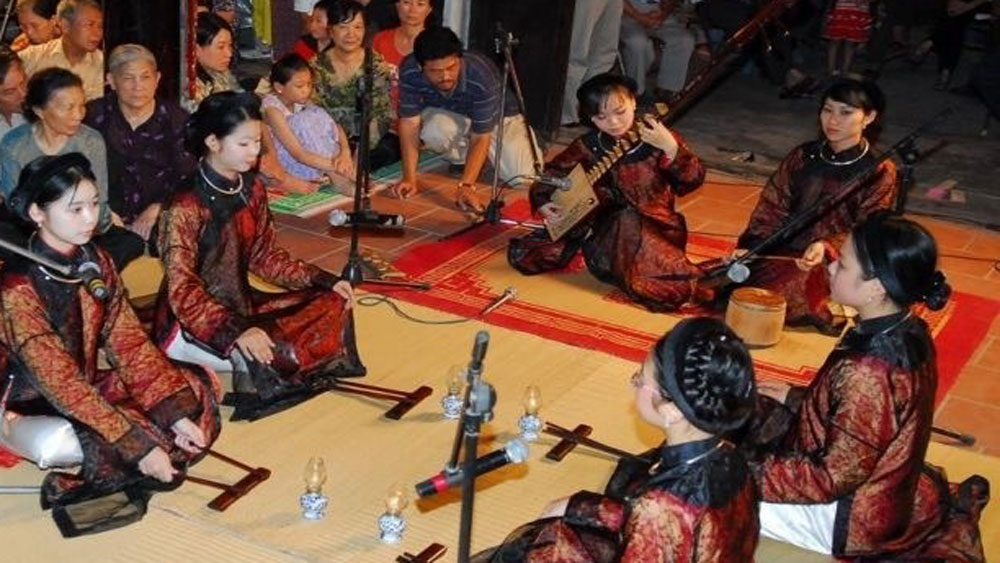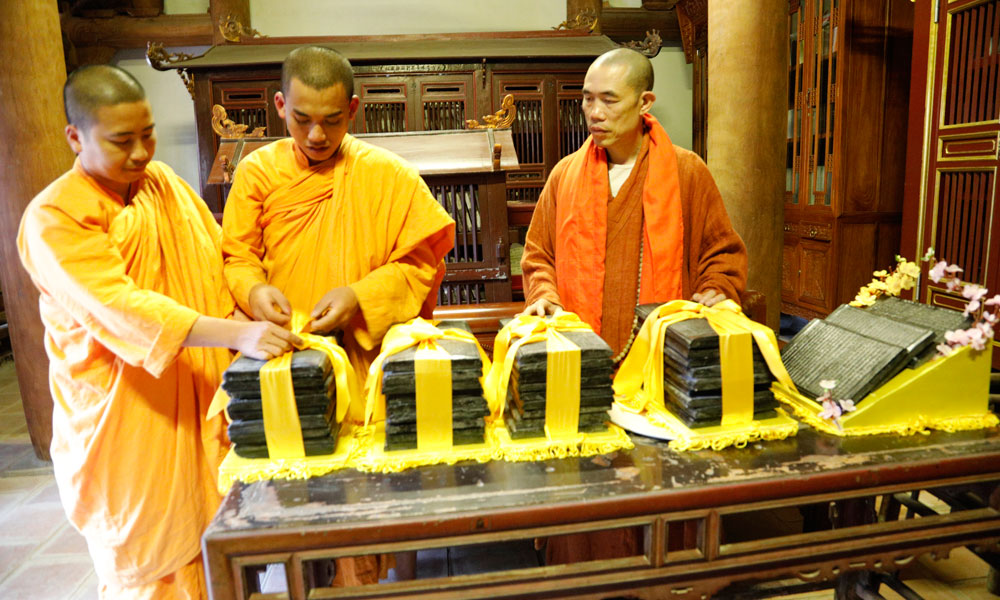Experts want digital archive for ceremonial singing
Researcher Bui Trong Hien has proposed setting up a general stock of ca tru.
He said currently, some examples of the singing are held by the Vietnam Music Institute, some by the National Culture and Arts Institute, and others are owned by private collectors and researchers.
 |
|
A performance by the young Thang Long ca tru group at the Ngoc Ha ancient communal house in Hanoi's Ba Dinh district. |
The audio is contained on CDs, DVDs, tapes and video cassettes. Researcher Nguyen Quang Long agreed the task is very important.
A few years ago, Hien was doing some research on ca tru, when he borrowed ten tapes from an artist. But all of them had got mouldy. Hien had to painstakingly clean the tapes with alcohol and a soft piece of cotton. It took him two weeks to digitally record the songs from the tapes.
Long also recorded Nguyen Phu De’s performances five years ago as part of a project hosted by the Music Publishing House.
Long said other agencies like the Radio Voice of Vietnam, Music Publishing House Dihavina have recorded performances by various ca tru artists to keep as archives.
Long also revealed that though the Music Institute possesses an extensive array of recordings, it is just for reference as most of the songs were not recorded in a studio, meaning the quality is often poor.
Records by the Music Publishing House are more profitable as they can be copied for sale to the public.
Long suggested that the archives of the Music Publishing House should be digitalised for preservation.
Hien also stressed the need to change the sound recorded into a digital form.
“The cassette tapes may get mouldy, which affects the quality,” he said.
He also said the sound on the old tapes should be cleaned up before being transformed into digital.
“Modern software can help improve the sound,” he said.
Both researchers suggested setting up a general stock of ca tru art for researchers and new performers.
Ca tru is a complex form of sung poetry found in the north of Vietnam from the 11th century on, using lyrics written in traditional Vietnamese poetic forms.
For much of its history, it was associated with a geisha-like form of entertainment, which combined entertaining wealthy people as well as performing religious songs for the royal court.
Source: VNS/VNA
 Bắc giang
Bắc giang















Reader's comments (0)